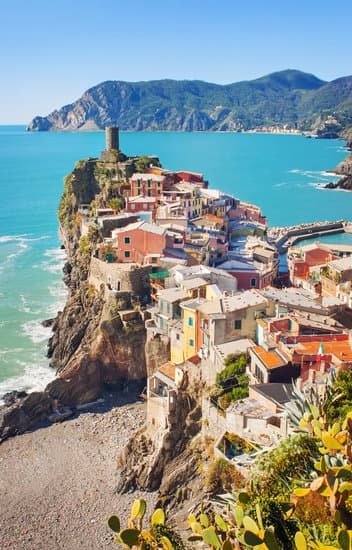Looking for tips for traveling to Italy in July? Italy is a popular summer destination, and July is one of the busiest and most exciting times to visit this beautiful country. The warm weather, vibrant cultural events, and long daylight hours make it an ideal time for travelers to explore all that Italy has to offer.
July is the peak of summer in Italy, which means clear skies, sunny days, and warm temperatures perfect for sightseeing, enjoying outdoor activities, and soaking up the Mediterranean atmosphere. From the charming streets of Rome to the stunning coastline of the Amalfi Coast, there is no shortage of breathtaking destinations waiting to be explored during this time of year.
In this article, we will provide useful information on what to expect from the weather in Italy in July, top attractions to visit, packing tips, advice on how to beat the crowds, insider tips for getting around, accommodation options and recommendations for where to stay, as well as details about cultural events and festivals taking place throughout the country during this lively month.
Whether you’re planning your first trip or looking for new experiences in Italy, these tips will ensure you make the most of your visit in July.
Weather in Italy in July
When traveling to Italy in July, it’s essential to be prepared for the hot and sunny weather that is characteristic of this time of year. The average temperature in Italy during July ranges from 77°F to 86°F (25°C to 30°C), with some regions experiencing even higher temperatures. If you’re planning a trip to Italy in July, here’s what you can expect in terms of weather and how to prepare for it:
- Expect long days: In July, Italy experiences long daylight hours, with the sun setting later in the evening. This means more time for sightseeing and enjoying outdoor activities. Be sure to pack sunglasses, a wide-brimmed hat, and sunscreen to protect yourself from the strong UV rays.
- Prepare for high temperatures: With average high temperatures hovering around 86°F (30°C), it’s important to dress appropriately for the heat. Opt for lightweight, breathable clothing such as cotton or linen. Consider packing a refillable water bottle to stay hydrated throughout the day.
- Be mindful of humidity: Some regions of Italy, particularly coastal areas and cities like Rome and Florence, can experience high humidity levels in July. To combat this, consider carrying a small travel fan or portable misting spray to keep cool while exploring.
Overall, being mindful of the weather conditions and preparing accordingly will ensure a comfortable and enjoyable trip to Italy in July.
Top Attractions to Visit in Italy in July
Italy is a country with an abundance of attractions, and July is a particularly exciting time to explore this beautiful destination. From historic landmarks to stunning beaches, Italy has something for everyone. Here are some top attractions to visit in Italy in July.
Historic Landmarks
Italy is home to some of the world’s most famous historic landmarks, such as the Colosseum in Rome, the Leaning Tower of Pisa, and the ancient city of Pompeii. Visiting these iconic sites in July allows you to immerse yourself in history while enjoying the warm summer weather.
Beautiful Beaches
For those seeking sun and relaxation, Italy’s coastline offers a plethora of beautiful beaches. From the Amalfi Coast to the island of Sardinia, there are endless options for beachgoers. In July, these coastal areas are at their best with warm waters and plenty of sunshine.
Cultural Cities
July is an ideal time to explore Italy’s vibrant cities such as Florence, Venice, and Milan. These urban centers offer an array of cultural experiences including art galleries, museums, and delicious culinary delights. The pleasant weather in July makes it perfect for strolling through charming streets and indulging in gelato.
Visiting these top attractions can create unforgettable memories, but it’s essential to plan your trips carefully due to the higher number of visitors during this peak tourist season. Incorporating these attractions into your travel itinerary along with other tips for traveling to Italy in July can ensure a smooth and memorable trip.
Packing Tips for Traveling to Italy in July
Italy in July is a popular time for tourists to visit due to the warm weather, lively atmosphere, and an array of cultural events and festivals throughout the country. When preparing for a trip to Italy in July, it’s essential to pack accordingly to ensure a comfortable and enjoyable experience. Here are some packing tips for traveling to Italy in July:
1. Light Clothing: With average temperatures ranging from 70°F to 90°F, it’s important to pack light, breathable clothing such as cotton or linen garments. This will help keep you cool while exploring various attractions in Italy.
2. Sun Protection: The sun can be intense in Italy during the summer months, so it’s crucial to pack sunscreen, sunglasses, and a wide-brimmed hat to protect yourself from harmful UV rays.
3. Comfortable Shoes: Since you’ll likely be doing a lot of walking while sightseeing, make sure to bring comfortable shoes that can handle different terrains such as cobblestone streets or uneven pathways.
In addition to these packing tips, it’s also important to stay hydrated and seek shade when necessary during your travels through Italy in July. By being mindful of these factors, you can fully enjoy all that Italy has to offer during this popular travel season.
| Packing Tips for Traveling | To Italy in July |
|---|---|
| Light Clothing | Cotton or linen garments |
| Sun Protection | Sunscreen, sunglasses, hat |
| Comfortable Shoes | Adequate for walking on cobblestone streets etc. |
How to Beat the Crowds in Italy in July
Italy is a popular travel destination in July, attracting tourists from all around the world. With its beautiful landscapes, rich history, and delicious cuisine, it’s no wonder that so many people choose to visit Italy during this time of year. However, with popularity comes crowded attractions and long lines, which can detract from the overall experience. Here are some tips for traveling to Italy in July to help you beat the crowds and make the most of your trip.
Visit Lesser-Known Attractions
While iconic landmarks such as the Colosseum in Rome and the Leaning Tower of Pisa are must-see attractions, they also draw large crowds. Consider visiting some lesser-known gems instead, such as the medieval town of Lucca or the ancient ruins of Paestum. Not only will you avoid the throngs of tourists, but you’ll also get a more authentic and peaceful experience.
Plan Your Visits During Off-Peak Hours
To avoid the crowds at popular attractions, try to visit them early in the morning or later in the evening. Many tourists tend to visit these sites during midday, so planning your visits outside of these peak hours can significantly reduce wait times and give you more space to appreciate the beauty of these places.
Explore Off-the-Beaten-Path Destinations
Instead of sticking to Italy’s major cities and tourist hotspots, consider exploring lesser-known destinations. Head to charming villages like Orvieto or Alberobello, where you can immerse yourself in local culture without being surrounded by hordes of other visitors. These off-the-beaten-path destinations offer a more tranquil and authentic Italian experience.
By following these tips for traveling to Italy in July, you can minimize the impact of crowds on your trip and enjoy a more relaxed and meaningful travel experience.
Insider Tips for Getting Around Italy in July
When traveling to Italy in July, it’s important to plan how to get around the country. Whether you want to explore the bustling cities or relax in the countryside, there are various transportation options available. Here are some insider tips for getting around Italy in July:
1. Use public transportation: Italy has an extensive and efficient public transportation system, including trains, buses, and trams. In major cities like Rome, Florence, and Venice, the most convenient way to get around is by using the local public transportation network. Consider purchasing a multi-day pass if you plan on using public transport frequently during your stay.
2. Rent a car: If you want to explore the Italian countryside or visit remote villages and towns, renting a car can be a great option. Keep in mind that driving in big cities can be challenging due to traffic and limited parking spots. However, having a car gives you more flexibility and freedom to create your own itinerary.
3. Walk or Bike: Many of Italy’s attractions are located close to each other, making walking or biking a practical option for exploring cities like Rome, Florence, and Venice. Walking also allows you to soak up the atmosphere of narrow cobblestone streets and picturesque alleyways that cars can’t reach.
Remember that July is high tourist season in Italy, so expect popular destinations to be crowded and book transportation tickets and rentals in advance whenever possible.
Where to Stay in Italy in July
When traveling to Italy in July, it is important to consider the various accommodation options available and make your bookings well in advance. July is a popular time for tourists to visit Italy, so it’s crucial to secure your accommodations early to ensure you have a place to stay during your trip. The country offers a wide range of places to stay, from luxury hotels and boutique bed and breakfasts to budget-friendly hostels and vacation rentals.
For those looking for a luxurious experience, Italy boasts an array of high-end hotels located in popular tourist cities such as Rome, Florence, and Venice. These hotels often offer stunning views, top-notch amenities, and convenient locations near major attractions. If you prefer a more personalized experience, consider staying at a charming bed and breakfast or boutique hotel, where you can enjoy the local hospitality and unique accommodations.
If you are traveling on a budget, there are plenty of affordable accommodation options available throughout Italy. Hostels are a great choice for budget-conscious travelers, offering shared or private rooms at economical prices. Additionally, vacation rentals such as apartments or villas are excellent options for those seeking more space and the flexibility of cooking their meals.
Regardless of your accommodation preference, booking early is essential when visiting Italy in July. By securing your lodging in advance, you can ensure that you have a comfortable place to stay while enjoying everything this beautiful country has to offer.
Cultural Events and Festivals in Italy in July
Italy is not only known for its stunning architecture, delicious cuisine, and rich history, but it is also renowned for its vibrant culture and lively festivals. July in Italy is a time when many cities come alive with music, art, and traditional celebrations. From religious processions to food fairs, there’s no shortage of cultural events to experience during your visit to Italy in July.
One of the most famous events in Italy in July is the Palio di Siena. This historic horse race takes place in the medieval city of Siena on July 2nd and August 16th. The event is steeped in tradition and rivalry between the city’s contrade, or districts, making it a thrilling spectacle to witness. Visitors can immerse themselves in the local customs and folklore that surround this ancient competition.
Another must-see festival is the Umbria Jazz Festival in Perugia, which spans over ten days at the beginning of July. This internationally renowned event attracts jazz enthusiasts from around the world with its lineup of world-class musicians performing against the backdrop of Perugia’s picturesque streets and squares. The festival also offers workshops, exhibitions, and food tastings that showcase the best of Italian jazz culture.
| Event | Date |
|---|---|
| Palio di Siena | July 2nd & August 16th |
| Umbria Jazz Festival | Beginning of July (10-day event) |
Tips for Staying Cool and Hydrated in Italy in July
In conclusion, July is undoubtedly one of the peak times to visit Italy due to its warm and sunny weather, as well as the numerous cultural events and festivals that take place throughout the country. While the summer months can bring large crowds and high temperatures, with adequate preparation and planning, a trip to Italy in July can be a memorable and enjoyable experience.
When it comes to the weather in Italy in July, travelers should expect hot temperatures, especially in popular tourist destinations such as Rome, Florence, and Venice. It’s important to pack appropriate clothing and accessories such as lightweight, breathable fabrics, sun hats, sunglasses, and sunscreen to protect against the sun’s rays.
To beat the crowds in Italy in July, consider visiting popular attractions early in the morning or later in the evening when fewer tourists are present. Additionally, exploring off-the-beaten-path destinations or lesser-known attractions can provide a respite from the crowds.
Finally, staying cool and hydrated is essential during a trip to Italy in July. Be sure to drink plenty of water throughout the day and seek out air-conditioned spaces when possible. Embracing siestas or taking breaks during the hottest part of the day can also help conserve energy and stay refreshed while exploring all that Italy has to offer during this vibrant month.
Frequently Asked Questions
Is It a Good Time to Visit Italy in July?
July can be a great time to visit Italy, but it also comes with some challenges. The weather is typically hot and many Italians go on holiday during this month, leading to crowded tourist destinations and higher prices.
How Should I Pack for a Trip to Italy in July?
When packing for a trip to Italy in July, it’s essential to pack lightweight clothing, including breathable fabrics like cotton or linen. Don’t forget comfortable walking shoes for exploring the cobblestone streets and a hat for sun protection. It’s also wise to bring a reusable water bottle to stay hydrated.
How to Survive Italy in July?
To survive Italy in July, it’s important to stay hydrated, seek shade during the hottest parts of the day, and wear sunscreen. Be prepared for crowds at popular tourist spots and consider booking tours or activities in advance to avoid long lines.
Additionally, try to embrace the local custom of taking an afternoon break (riposo) during the hottest part of the day.

I’m a passionate traveler, writer, and Italophile. My fascination with Italy’s history, art, and culture has led me on countless adventures across the Italian landscape. Through “I Live Italy,” I share my love for this extraordinary country and aims to inspire others to explore its boundless beauty.





